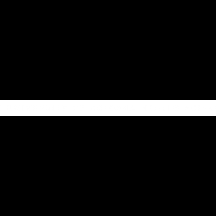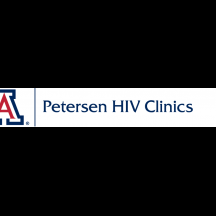The University of Arizona is among 18 institutions participating in a $28 million, five-year Martin Delaney Collaboratory grant awarded today to George Washington University by the National Institutes of Health (NIH) to marshal various immunotherapy advances to create a novel HIV cure strategy.
The effort involves six teams working on multiple projects. The project the UA College of Medicine – Tucson is participating in, “Bench to Bed Enhanced Lymphocyte Infusions to Engineer Viral Eradication (BELIEVE),” will leverage the consortium’s innovative cell therapy approach that focuses on making an individual’s natural immune system work better at eliminating HIV reservoirs.
 “We will be working with the BELIEVE team to test a strategy to cure HIV by targeting killer cells to sites within lymph nodes where the virus hides,” said Elizabeth Connick, MD, a professor in the UA Department of Medicine, chief of the Division of Infectious Diseases and the local principal investigator on the project. She anticipates receiving about $650,000 of the grant to fund activities overseen by her team in the project.
“We will be working with the BELIEVE team to test a strategy to cure HIV by targeting killer cells to sites within lymph nodes where the virus hides,” said Elizabeth Connick, MD, a professor in the UA Department of Medicine, chief of the Division of Infectious Diseases and the local principal investigator on the project. She anticipates receiving about $650,000 of the grant to fund activities overseen by her team in the project.
The UA is home to the Arizona AIDS Education & Training Center (AETC), as well as the Petersen HIV Clinics, which are rated among the top three in the country for HIV patient care and are located at Banner – University Medical Center Tucson and Banner – UMC South, the UA’s primary clinical teaching hospitals. The Arizona AETC and Petersen Clinics are funded by the U.S. Department of Health and Human Services.
This award is part of the NIH’s Martin Delaney Collaboratory program, which fosters public-private partnerships to accelerate HIV/AIDS cure research. Delaney was a widely respected AIDS activist who championed partnerships involving government, academia and industry.
“We are happy and humbled to be selected as one of the recipients of this important award,” said Douglas Nixon, MD, PhD, principal investigator and chair of the Department of Microbiology, Immunology and Tropical Medicine in the GW School of Medicine and Health Sciences. “We have gathered together a diverse group of researchers—all driven by the belief that a cure will depend on enhancing natural anti-HIV immunity and that finding a cure must be accomplished in a fully participatory stakeholder fashion.”
The BELIEVE research team will define mechanisms that historically have led to inability of the immune system to clear HIV-infected cells completely. Their initial goals, with studies ranging from basic science research through translation into clinical studies, are:
- Enhance the killing ability of HIV-specific killer Tcells
- Augment natural killer cell functions
- Harness Tcell, natural killer cell and antibody-mediated effectors in both adult and pediatric HIV infections
![Super-resolution image of a group of killer T cells (green and red) surrounding a cancer cell (blue, center). When a killer T cell makes contact with a target cell, it attaches and spreads over the dangerous target using special chemicals housed in vesicles (red) to deliver a killing blow—an event nicknamed “the kiss of death.” After the target cell is killed, killer T cells move on to the next victim. [Photo courtesy of NIH]](http://opa.ahsc.arizona.edu/sites/opa.ahsc.arizona.edu/files/uploads/killer_t_cells_350.jpg) BELIEVE will partner with Altor Bioscience, whose drug ALT-803, already in clinical trials for cancer, has been found to not only “wake up” the HIV virus from latency, but also enhance the ability of the immune system to kill those cells. As this drug is already in clinical trials for cancer, establishing clinical trials for HIV/AIDS will be accelerated. BELIEVE also will partner with Torque, a biomedical engineering company with technology to attach efficacy-enhancing drugs to cytotoxic T-cells, which the BELIEVE team plan to use to clear the HIV viral reservoir. Cytotoxic T-cells function better if they are delivered with certain drugs, but delivering these drugs directly has proven difficult.
BELIEVE will partner with Altor Bioscience, whose drug ALT-803, already in clinical trials for cancer, has been found to not only “wake up” the HIV virus from latency, but also enhance the ability of the immune system to kill those cells. As this drug is already in clinical trials for cancer, establishing clinical trials for HIV/AIDS will be accelerated. BELIEVE also will partner with Torque, a biomedical engineering company with technology to attach efficacy-enhancing drugs to cytotoxic T-cells, which the BELIEVE team plan to use to clear the HIV viral reservoir. Cytotoxic T-cells function better if they are delivered with certain drugs, but delivering these drugs directly has proven difficult.
Joining the UA and GWU in this research are Children’s National Health System; Howard University; University of Pittsburgh; Brigham Young University; University of Minnesota; Johns Hopkins University; Seattle Children’s Hospital; Beth Israel Deaconess Medical Center, Harvard University; University of Pennsylvania; Georgetown University; Albert Einstein College of Medicine; University of Toronto, Canada; Simon Fraser University, British Columbia, Canada; Centro de Investigación en Enfermedades Infecciosas, Mexico City, Mexico; and the University of São Paulo, Brazil. Studies will be conducted in concert with communities at local clinics and agencies associated with these institutions in Canada, Brazil, Mexico and the United States.
“More than 37 million people in the world currently are living with HIV infection,” noted Dr. Connick. “Although antiviral therapies have allowed many to live productive lives, HIV infection still imposes a tremendous health burden, as well as social stigma. To remain healthy, people must take medications daily. Some are unable to get the medications, particularly in the developing world. Furthermore, medications and medical monitoring are costly to both the individual and the health-care system. A cure for HIV infection would provide tremendous relief to millions of people, as well as major cost savings.”
UA activities in the project include analysis and writing the final manuscripts, Dr. Connick added. She and longtime collaborator Pamela Skinner, PhD, of the University of Minnesota’s Institute for Molecular Virology, also will coordinate and oversee activities at other sites involved in this study.
For Chad Larson, a 48-year-old Petersen Clinic patient first identified as HIV-positive in the late 1980s, a cure for the condition would be nothing short of a miracle. The Safford, Ariz., resident can remember taking a 32-pill “cocktail” that left him with nausea and other negative side effects. Now, he’s down to two pills a day with no detectable viral load in recent memory, except when he began treatment for stage-4 colon cancer five years ago. He has been cancer free for three years, too.
“It’s given me a lot of hope. I never thought I’d see two pills a day. I didn’t think I could ask for anything more, so if there were a cure in my lifetime that would just be a miracle. I’ve seen a lot of innocent people lose their lives — gay, straight, male, female — through the years,” Larson said.
For more information on the BELIEVE grant, click here.
For more information on this year’s Martin Delaney Collaboratory grants, click here.
This research is supported by the NIH under award number 1 UM1AI26617-01.
About the UA College of Medicine – Tucson
The University of Arizona College of Medicine – Tucson is advancing health and wellness through state-of-the-art medical education programs, groundbreaking research and advancements in patient care in Arizona and across the United States. Founded in 1967, the College ranks among the top medical schools in the nation for research and primary care and is leading the way in academic medicine through its partnership with Banner – University Medicine, a new division of one of the largest nonprofit health-care systems in the country. For more information: http://medicine.arizona.edu
About Banner – University Medical Center
Banner – University Medical Center Tucson and Banner – University Medical Center South are part of Banner – University Medicine, a premier academic medical network. These institutions are academic medical centers for the University of Arizona College of Medicine – Tucson. Included on the two campuses are Banner Children’s at Diamond Children’s Medical Center, the Peter and Paula Fasseas Cancer Clinic at UA Cancer Center – North and many other clinics across Tucson and in Green Valley and Sierra Vista, Ariz. The two academic medical centers are part of Arizona-based Banner Health, one of the largest nonprofit health-care systems in the country. Banner Health operates in seven states: Alaska, Arizona, California, Colorado, Nebraska, Nevada and Wyoming. For more information: www.BannerHealth.com/UniversityTucson or www.bannerhealth.com/UniversitySouth
About the University of Arizona Health Sciences
The University of Arizona Health Sciences is the statewide leader in biomedical research and health professions training. The UA Health Sciences includes the UA Colleges of Medicine (Phoenix and Tucson), Nursing, Pharmacy and Mel and Enid Zuckerman College of Public Health, with main campus locations in Tucson and the growing Phoenix Biomedical Campus in downtown Phoenix. From these vantage points, the UA Health Sciences reaches across the state of Arizona and the greater Southwest to provide cutting-edge health education, research, patient care and community outreach services. A major economic engine, the UA Health Sciences employs almost 5,000 people, has nearly 1,000 faculty members and garners more than $126 million in research grants and contracts annually. For more information: http://uahs.arizona.edu

